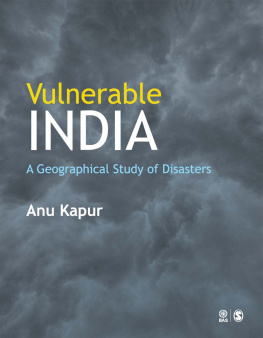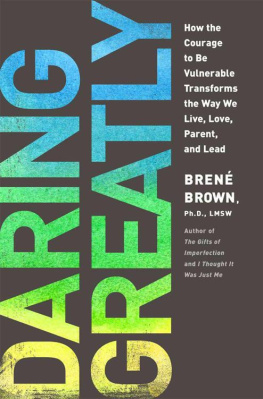
On Vulnerability
On Vulnerability maps out an array of perspectives for critically examining the nature of vulnerability, its unequal patterning across different social groups, alongside the everyday social processes that render us vulnerable interactions, identity and group dynamics.
Each chapter equips the reader with a particular sensitising framework for navigating and questioning what it means to be vulnerable or how people cope amid vulnerability. From deviance, stigma and the spoiling or fracturing of identity, to perspectives such as intersectionality, risk, emotions and the vulnerable body, the book traces the theoretical roots of these different analytical lenses, before applying these through illuminating examples and case studies.
Drawing on scholarship across more interpretative, analytic and critical traditions, the chapters combine into a multi-dimensional toolkit that will enable the study of the cultural meanings of vulnerability, the political-economic factors that shape its patterning, with a critical sensibility for unlearning many assumptions, therefore challenging our sense of who is, or who can be, vulnerable. This book is designed to equip undergraduate and post-graduate students and researchers across the social, health and human sciences, aiding them as they study and question the experiences and structures of vulnerability in our social world.
Patrick Brown is Associate Professor in the Department of Sociology at the University of Amsterdam. He studies how individuals, groups and organisations manage their vulnerability amid uncertainty, for example, through risk, trust, hope, faith and everyday rituals, and the difficulties they encounter in doing so.
On Vulnerability
A Critical Introduction
Patrick Brown
First published 2022
by Routledge
2 Park Square, Milton Park, Abingdon, Oxon OX14 4RN
and by Routledge
605 Third Avenue, New York, NY 10158
Routledge is an imprint of the Taylor & Francis Group, an informa business
2022 Patrick Brown
The right of Patrick Brown to be identified as author of this work has been asserted by him in accordance with sections 77 and 78 of the Copyright, Designs and Patents Act 1988.
All rights reserved. No part of this book may be reprinted or reproduced or utilised in any form or by any electronic, mechanical, or other means, now known or hereafter invented, including photocopying and recording, or in any information storage or retrieval system, without permission in writing from the publishers.
Trademark notice: Product or corporate names may be trademarks or registered trademarks, and are used only for identification and explanation without intent to infringe.
British Library Cataloguing-in-Publication Data
A catalogue record for this book is available from the British Library
Library of Congress Cataloging-in-Publication Data
Names: Brown, Patrick (Sociologist) author.
Title: On vulnerability : a critical introduction / Patrick Brown.
Description: First Edition. | New York : Routeldge, 2021. |
Includes bibliographical references and index.
Identifiers: LCCN 2020057115 (print) | LCCN 2020057116 (ebook) |
ISBN 9780367366612 (paperback) | ISBN 9780367366605 (hardback) |
ISBN 9780429347740 (ebook)
Subjects: LCSH: Vulnerability (Personality trait) | Social interaction. |
Social groupsPsychological aspects.
Classification: LCC BF698.35.V85 B76 2021 (print) |
LCC BF698.35.V85 (ebook) | DDC 179/.9dc23
LC record available at https://lccn.loc.gov/2020057115
LC ebook record available at https://lccn.loc.gov/2020057116
ISBN: 978-0-367-36660-5 (hbk)
ISBN: 978-0-367-36661-2 (pbk)
ISBN: 978-0-429-34774-0 (ebk)
Typeset in Bembo
by Newgen Publishing UK
To my parents Eleanor and Robert and to the many students who have followed my course on vulnerability at the University of Amsterdam over the past ten years
Contents
Although these are probably the first sentences you will come across as you turn or scroll through this book, these are the last four paragraphs I am writing, having recently submitted the main chapters to my editor. As I am in the midst of putting together what academic publishers refer to as front matter (Contents, List of figures, etc.), I have a chance to catch my breath and to reflect on what is in the book and, moreover, what is missing. Having watched the compelling and moving documentary Crip Camp with a group of Medical Anthropology and Sociology MSc students a few days ago, I wish I had done more to reflect critical disability studies and theory than the brief mention in . In this sense, there are surely a great many empirical case studies I might also have included, as well as many valuable alternative theoretical perspectives I might have developed (far more). Yet the sub-title of this book, a critical introduction, provides me with some solace and relief.
So, although I am strongly aware of the inevitable that I would repeat the tragic silence around many vulnerabilities and forms of suffering, as we will consider in I am also hopeful that the various sensitising frameworks that you will find in the following pages will equip you sufficiently to go on to explore, and begin to understand, many more contexts and approaches. Indeed, there are many specific contexts where heightened vulnerability exists and that remain neglected by social researchers or, perhaps worse, which have been misunderstood and misrepresented and therefore need illuminating in new and critical ways. Yet, a central theme in this book that I hope you will also come to grasp is that vulnerability is intrinsic to our everyday social lives and the shared lifeworlds that make the social possible our interactions with others, our sociality in groups and our development as a global society. So, while I will show you various ways of grasping the unequal patterning of vulnerability, with a view to tackling this, being vulnerable to others is not necessarily a problem of course.
Another recurring theme in the book will be the need to unlearn many of our assumptions about who is vulnerable and what it means to be vulnerable. Indeed, we will explore important ways of doing this unlearning, such as studying what happens when people become vulnerable all of a sudden and what this illuminates about vulnerability and the fragility of everyday life. Another key approach to this unlearning is to decentre our European-Enlightenment rooted understandings of vulnerability and coping. In , for example, I will argue that our grasp of embodied vulnerability is profoundly hindered by the Cartesian dualism that one particular history of ideas has bequeathed us. Social processes and studies in non-North-Western contexts may be less tainted by this dualism and are therefore vital to our (un)learning. This critical questioning of our taken-for-granted understanding becomes especially useful when we combine it with interpretative and analytic perspectives. This threefold orientation informs much of the work that follows. Any study has blind-spots, however, and one of your roles as a reader is to be attentive to the gaps and flawed assumptions that are inevitably present in these chapters.










